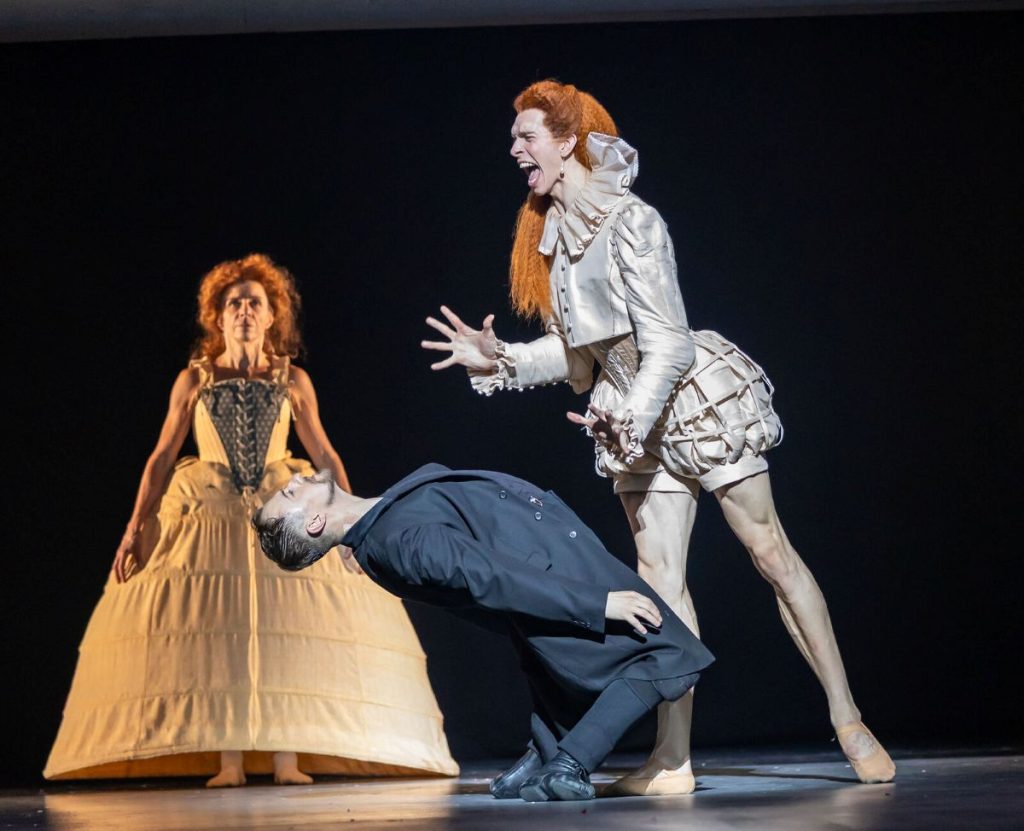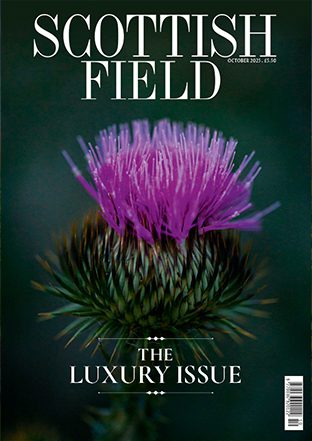
Edinburgh International Festival: Mary, Queen of Scots, Orpheus and Eurydice & Book of Mountains and Seas
Dramatic, intimate, and visually striking – Sophie Laplane and James Bonas’s brand new ballet, Mary Queen of Scots, is a gothic reimagining of the young queen’s life, says Frankie Reason.
★★★★★
The story unfolds through the fragmented recollections of an elderly Elizabeth, brought to life by Swedish dancer Charlotta Öfverholm, and the curtains open on the aging queen playing, whimpering, laughing in the snow.
She is soon joined by Roseanna Leney in the title role, and Harvey Littlefield as a gender-bent young Elizabeth, dancing in tandem across the stage, doubled by their own dark shadows.
Two Elizabeths dancing opposite the one Mary foreshadows the fateful execution of the Scottish queen, and Littlefield’s distinctive height contrasted against Leney’s lithe frame effectively underscores the uneven power dynamic at play.
Laplane’s choreography is powerful and angular, articulating the jagged edges of a fraught monarchy and mistrusting relationships, and though lively Ceilidh-inspired dances distinguish Mary’s court, Leney’s solos fuse vitality with anguish and anxiety.
The apparent opposition between Scotland’s vibrant dynamism and the imperious, delirious Elizabeth is complicated by the treachery of Mary’s position. The choreography is persuasive, but the lighting and costume design are particularly striking.
In the second act, Leney, shadowed by four dancers, is projected onto the back wall as a monstrous, many-limbed insect poised to strike, drawing an audible gasp from the audience. Soutra Gilmour’s minimalist set is brought to life by Bonnie Beecher’s dramatic silhouettes.
Kayla-Maree Tarantalo as the jester is a particular standout. At once Lear’s Fool and Oberon’s Puck, Tarantalo capers about the stage providing snatches of genuine comedy and ridiculing the sombre activities of the power-mad players.
Orpheus and Eurydice almost feels like two shows, both of high calibre and quality, says Megan Amato.
★★★★★
A woman with long dark hair is elevated into the air by only a corde lisse, her blood red dress a beacon in the thick smoke that devours the stage. She writhes around on that cord, hanging at one point from only her foot, leaving the audience to visualise her dance of death. It made quite the entrance.
A boiler-room choir enters – named by me for their navy blue coveralls – and their harmonisation paints Yaron Lifschitz’s minimalist and clinical set design with a heightened sombre tone. Bold acrobats with astounding control and courage don’t allow for that tone to be too heavy though, lending the famous tragedy levity and vivacity.

While the acrobatics are breathtakingly spectacular and each scene they rearrange themselves in feels like some sort of absurdist painting, it’s Iestyn Davies’ haunting countertenor as Orpheus that stands out. Even while he’s running around, being lifted or thrown about, his crystal-like voice lingers. It’s beautifully contrasted with Samantha Clarke’s dynamic soprano that carries throughout the room, echoing Eurydice’s grief and
Orpheus and Eurydice almost feels like two shows, both of high calibre and quality. The acrobatics are executed with precision to make an maximum impact and an evocative, neck-achingly thrilling performance from an innovative and daring reform opera.
Book of Mountains and Seas – a sombre and atmospheric performance that felt monotonous as the production went though its four stories, says Megan Amato.
★★★
A couple of Edinburgh Fringes ago, I saw the dramatized version of this collection of creation myths from a Taiwanese student production, so I was keen to experience it through a different lens and media.
The first few minutes were hypnotic as the black-robbed choir were introduced on stage with a light from hand-held books illuminating solemn faces. Their voices harmonize in a melancholic symphony that has the audience transfixed, especially with their high notes that seemed to fill the packed theatre.
The stage design was simple and effective, repurposing a giant puppet to dramatize the myths that were projected in English & Mandarin surtitles. The third act telling the story of Hou Yi and the Ten Suns was stunning as lanterns lit the stage one by one, slowly to be extinguished by a silent Hou Yi and his arrow.

However, the hour and half of homogeneous singing and chanting felt like sitting in an uncomfortable church pew. And after a long day at 8pm, I found myself often shifting in my seat, wondering when if it was close to being over.
The fake language used in between the small bits of Mandarin was unconvincing. It often reminded me of the Sims singing in the shower. Perhaps they drew inspiration from Gregorian chanting or other forms of Orthodox chant, but a real language would have delivered a more meaningful performance celebrating the oral tradition of these myths.
A sombre and atmospheric performance that felt monotonous as the production went though its four stories. Part of this is my own fault as I went into the theatre expecting a Xiqu and was given a choir instead. It felt like a book with over-flowery language – there was a lot of beauty to be found but when its all delivered similarly, nothing stands out. Different acts between the choir singing up would have added more dimension and texture to both the storytelling and choir composition.
Read more Fringe Reviews here.
Subscribe to read the latest issue of Scottish Field.
TAGS

